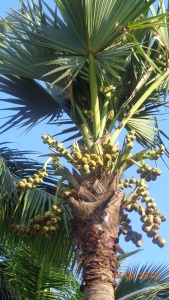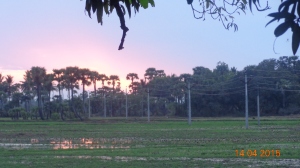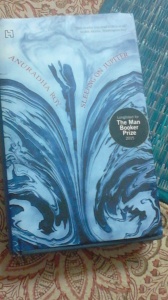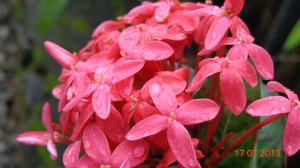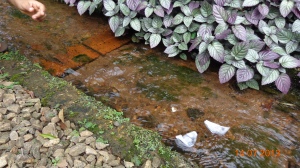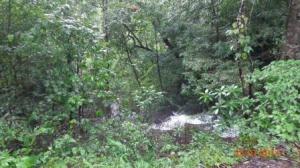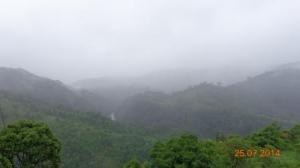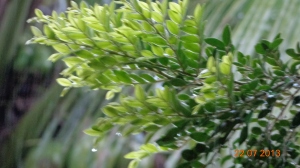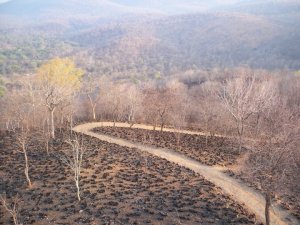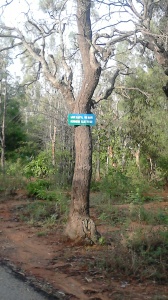When I told Bapa that I went to Machilipatnam, he said, it was under the King’s of Odisha once. Every time I tell him about our travels to different places, he will tell me something of its history, his knowledge dating back to a time before google and wiki.
And most of the time, I would not know those bits from history. And so, of course, I googled.
According to a history manual complied by Gordon Mackenzie in 1883, first mention of Machilipatnam in History was in connection with the construction of a mosque under Carnatic Rajas. In 1478, the army of Muhammad Shah Bahamani II captured Machilipatnam. In 1515, Krishna Devaraya defeated the Bahamani kings and put the port under the care of the Orissa Rajas. Bingo!
King of Golconda Quli Qutb Shah captured the area from the Orissa Rajas and it became part of the Golconda kingdom for nearly half a century. The Portuguese were the earliest to establish base at Machilipatnam and the Dutch followed suit. The English entered only in 1611 and established a factory there.
Apparently, the primary product that was exported from the port was cloth woven and dyed at villages in the hinterland. There were references of saltpetre (Potassium Nitrate), turmeric, spices and miscellaneous articles like spotted deer and waterfowl being exported from the port. The imports included all sorts of goods manufactured in England. There was a lot of demand for superfine scarlet and green coloured cloth. It was through this port that the diamonds purchased at Golconda were taken to England.
In 1686, the Emperor of Delhi defeated the dynasty of Golconda. The Dutch saw an opportunity to take possession of the port. The next year the East India Company declared war against Aurangzeb. In July that year his troops advanced as far as the fort at Kondapalli. The Dutch, English and French deserted the port town thereafter. Great Distress was reported in this part. There was an epidemic in the port town in 1687 and several Europeans died. The Dutch factory was damaged extensively by a huge storm on October 13, 1779. Nearly 20,000 people living in Machilipatnam and nearby villages were killed by the storm.http://www.thehindu.com/todays-paper/tp-features/tp-youngworld/port-of-diamonds-and-spices/article2268625.ece
Reading this, remembered Khambhat (Cambay) in Gujarat, another port town which lost its glory.
I tried to find more about Gordon Mackenzie, as one should know who has written the history to understand how its coloured (I am sure few decades from now, someone will do the same for the Time we are living in and find out what got written by whom). Just not there on the internet.
So, when I was asked, would you like to come with me to see the Kalamkari process? How does one refuse an opportunity like that? Craft, craftspeople, rural landscape and train, a big yes!
One late evening, with sudden hail storm in Hyderabad , temperature came down by almost ten degrees , becoming cold and windy, we waited for our night train to Machilipatnam from Secunderabad railway station. Couple of times in the night, I felt that the train was not moving, but did not realise till morning that the train was actually four hours late. A journey of seven hours, a delay of four hours.
Then lovely kindness happened. When we were trying to reach a hotel, the only other passenger in that cubicle after Vijayawada, another woman, asked us, “you are like my daughters, why don’t you come with me, freshen up and go on your work. Why do you need a hotel since you do not want to stay the night?” Then she also showed us her id card, a retired teacher, she was going home to meet her elderly parents who live with her sister’s family.
And so we went to her house, day was beginning so pleasantly.
The basics first. There are two kinds of Kalamkari. One, drawn with a pen, kalam-kari. Currently this happens only in Srikalahasti. The motifs are mostly large birds, trees, flowers and leaf. 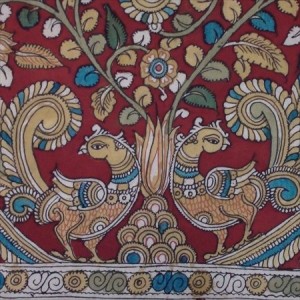
The second, blocks are used to print on fabric. Both use natural dyes. Pedna, where we we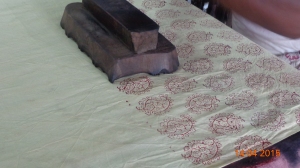 nt, is famous for the block printed Kalamkari.
nt, is famous for the block printed Kalamkari.
First stop at the supplier to Kriti Social Initiative. (http://www.kriti.org.in/). Stacks and stacks of Kalamkari fabric, how amazing that can be, I was like a child in a candy store! 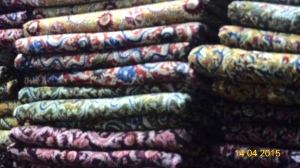
Wanting to understand more, we requested him to explain to us the process. The fabric goes through eight steps before how we get it in the shops.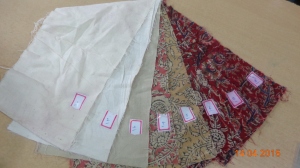
(http://andhrakalamkari.blogspot.in/2013/04/process-of-kalamkari.html).
Several leaves, barks, fruits play a role in the making of this fabric. Cow dung used for natural bleaching of the fabric, powered seeds of amla (Phyllanthus emblica , gooseberry), nutmeg (Jatika,Myristica fragrans) leaves while boiling the fabric, Harad/ Harida (Teriminalia chebula) and peels of pomegranate fruit dried and added while boiling the fabric. 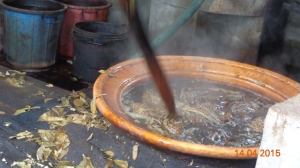
Someone said, two most important factors in our work are the sun and water (it had poured for two hours that very morning). He did not say forests, I assume because he buys all the above leaves and fruits, bark and seed from the market. That’s how the disconnection perhaps.
Almost with all crafts, the association with the natural world is so evident. Dyes, leaves, barks, skin has a role to play.
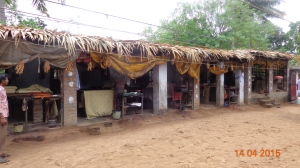 The workspace was a shed in a large compound where several, mostly men are involved in the process of production which happens in several steps. Similar to what one sees of ikat weavers under a master craftsman when many of the pre loom processes are done before it goes to be woven in weaver’s houses. Sheds of course could do with lot of improvements, very little safety measure were followed, wearing gloves or any protection when dyeing, working near fire.
The workspace was a shed in a large compound where several, mostly men are involved in the process of production which happens in several steps. Similar to what one sees of ikat weavers under a master craftsman when many of the pre loom processes are done before it goes to be woven in weaver’s houses. Sheds of course could do with lot of improvements, very little safety measure were followed, wearing gloves or any protection when dyeing, working near fire.
We still had some time so went looking around the area. It was Ambedkar Jayanti and we crossed several pendals being prepared for celebrating the same. This area is a handloom cluster.
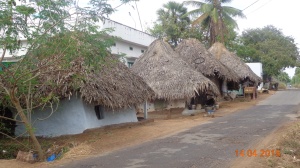 We were near Kapal doddi, a village famous for its sarees and saw a line of huts on the road side and stopped. These were all women weavers, who earn just about a hundred rupees a day, live in tiny huts which are just about enough to house the loom. They cook outside under a makeshift shed and sleep inside on the floor. There are active Weavers Cooperatives in the area.
We were near Kapal doddi, a village famous for its sarees and saw a line of huts on the road side and stopped. These were all women weavers, who earn just about a hundred rupees a day, live in tiny huts which are just about enough to house the loom. They cook outside under a makeshift shed and sleep inside on the floor. There are active Weavers Cooperatives in the area.
We saw many children involved in the process of Kalkamkari printing. Another aspect of traditional livelihoods where children are involved. I used to think children working is alright, so long as they get some literacy/ education and are not exploited. They learn this way, but whether they should miss school for the same? Or are they cheap labour? Can these families afford to send them to school? How relevant it would be to have a Vocational Education and Training plan for our country, a balance of education and skills. Here is an article by Kailash Satyarthi explaining how child labour actually perpetuates poverty. 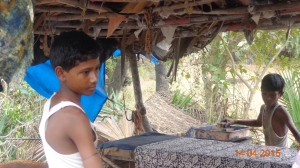
http://blogs.timesofindia.indiatimes.com/toi-edit-page/no-half-measures-please/
A nice long auto journey, good roads, weather was kind after the rains, good conversations, a nice sunset, telling us to return home, we reached back Machlipatnam station.
A certain discomfort I returned with which I have experienced in other craft places as well. The issue of plagiarism in this space. I have often come across, once a design works, whether its block printing, weaves or patterns of ready to wear clothes, they get copied. The creator certainly does not feel happy about it. Often times, these exquisite creations are unaffordable to most. Another reason why they are copied. How exclusive should these be? Is creative art, like these, one individual’s creation or is the result of many processes, inspirations and creative ways of seeing?
In the current trend of heavy mechanisation and synthetic, plastic products, which have hugely damaging impact on the environment, is it such a bad thing when the greener initiatives are copied? If that helps in spreading it more? When creativity is copied to make it more accessible?
Like drawing from a large pool of creative commons, knowledge, craft, initiatives, and ways of living.
I don’t know, am still wondering how much bad and how much good it is or it can be.
.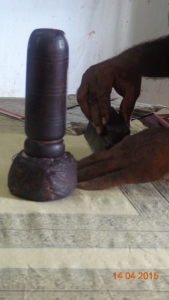
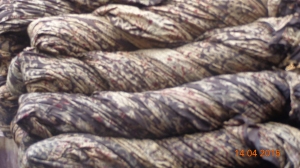
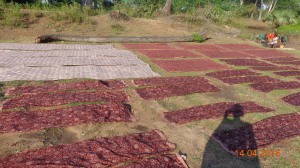 .
.